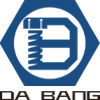Why is retapping necessary for hot-dip galvanized nuts?
Advantages:
1. Because the hot-dip galvanized zinc layer is thicker, when it is matched with hot-dip galvanized bolts, there is a certain probability that it cannot be screwed in. If the back-tapping process is adopted, the zinc layer of the inner thread of the nut is removed, which will ensure that the nut is 100% screwed into the bolt.
2. According to the characteristics of the positive and negative poles of hot-dip galvanizing, even if there is no zinc layer in the nut, a protective layer will be formed when the hot-dip galvanized bolt is screwed into the nut, which will also ensure that the nut will not rust.
3. The back-tapping nut and the bolt have a higher bite degree, which will ensure the bite force and tensile strength when the bolt and nut are matched.
4. The disadvantage of the back-tapping nut is that the cost will increase by about 5%.
What are the advantages and disadvantages of hot-dip galvanized nuts if they are not back-tapping?
Disadvantages:
Because the hot-dip galvanized zinc layer is thicker, when the hot-dip galvanized nut is matched with hot-dip galvanized bolts, there is a certain probability that it cannot be screwed in. The control method is to increase the thread spacing of the nut before hot-dip galvanizing, but too large a thread spacing will not ensure the bite degree and matching tensile strength. If you want to avoid not achieving the bite degree, you must follow a smaller thread pitch, but because the hot-dip galvanizing process cannot ensure uniform zinc layer thickness, there is about a 10% probability that the nut needs to be screwed into the bolt with a tool or wrench.
The advantage is: the cost will be 5% lower than the cost of back tapping.
Dabang Fastener can already provide products with more precise control of zinc layer thickness, which provides a new solution for balancing cost and performance.
Post time: Jun-11-2025
